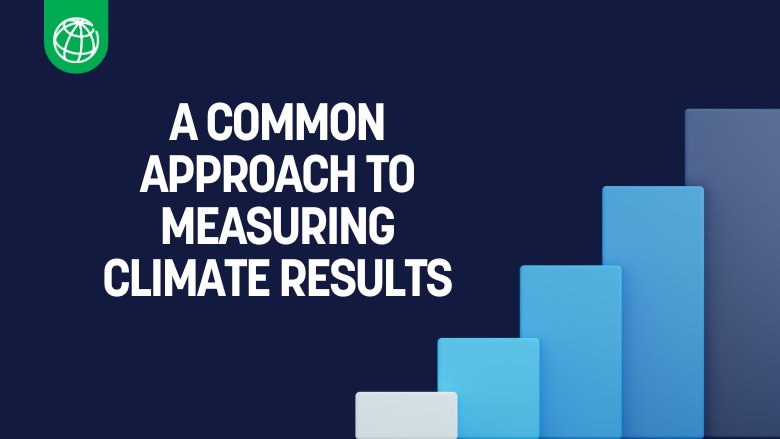Download: MDB Common Approach to Measuring Climate Results (April 2024)
Download: MDB Common Approach to Measuring Climate Results: Update on Indicators (November 2024)
At COP28, the Multilateral Development Banks (MDBs) agreed to developing a common approach for measuring climate results to complement tracking of climate finance. The MDBs have made significant progress in scaling-up climate finance commitments. However, there is recognition that climate finance neither measures the results nor the outcomes of climate actions.
The MDB Common Approach to Measuring Climate Results, published in April 2024, presented the first common structure to measuring climate results, a framework to define, measure, and link global progress on climate mitigation and adaptation with MDB results. This is a significant step which aims to provide stakeholders with a clearer view of the climate results of the MDBs related to the goals of the Paris Agreement.
The Common Approach consists of three levels: i) global and country context; ii) results from operations; and iii) institutional efforts. It reflects a bottom-up approach that links MDB finance and wider resources to results from operations to global and country progress. A clear understanding of global and country progress also informs the responses developed by MDBs in terms of resource use and development of new initiatives and operations.
At COP29, MDBs released the MDB Common Approach to Measuring Climate Results: Update on Indicators. The note expands on the April 2024 publication by providing:
- A set of common indicators that MDBs can apply to track climate impact for adaptation and resilience, mitigation, and country and client transition support.
- A definition for each common indicator provided, including the metric used to track the indicator and a summary of what the indicator captures.
- High-level methodological principles that shaped the indicators and their definitions, including structure of sectors and results areas, and guidelines for preparing estimate for a few selected common indicators.
The Common Approach is not a new reporting mechanism but rather helps to deepen collaboration across countries, sectors, MDBs, the private sector, and other stakeholders. MDBs will continue to refine and adjust the Common Approach through lessons learned and collaboration across MDBs, including considerations on ex-post results analysis where this is appropriate. This process will also be informed by further dialogue with stakeholders, advances in relevant technical areas, and evolving global reporting standards.
An enhanced approach to climate results measurement will enable the development community to augment its impact. It will support more informed risks and boost incentives to draw in more finance from all sources to make the planet more livable for people around the world. It can also support countries to measure their own efforts and results more effectively, making it easier for them to identify and address policy bottlenecks and track private sector investment opportunities.
